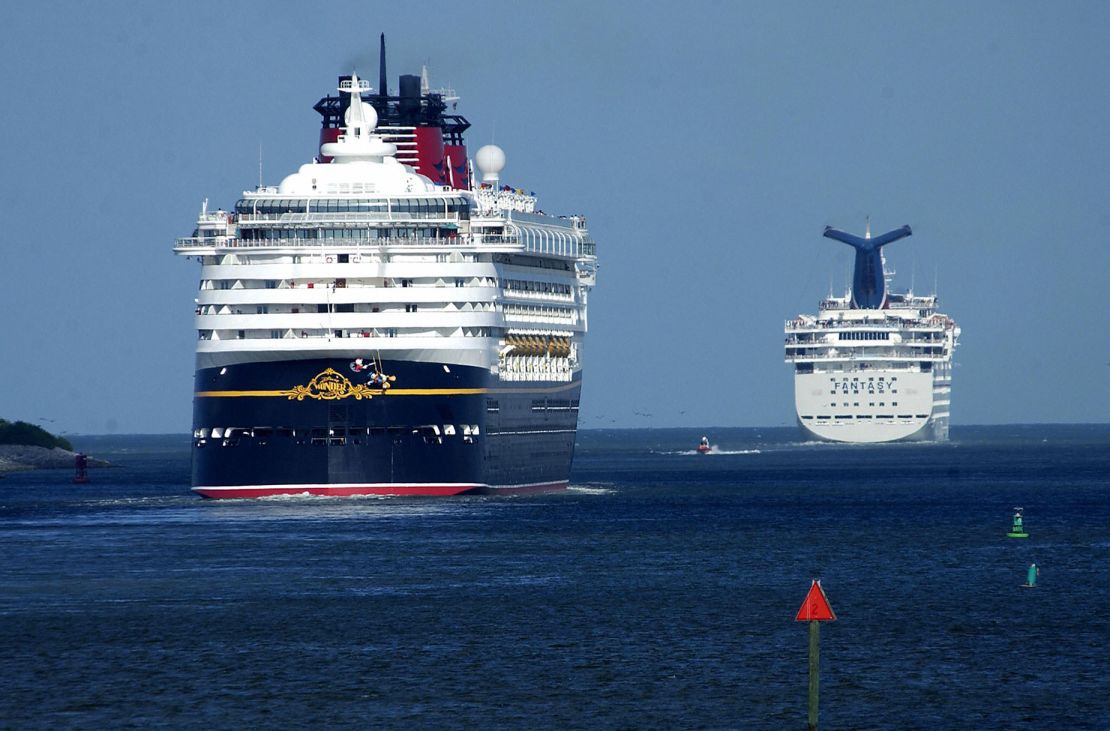Cruise ships have doubled in size over the past two decades, a precedent that could lead to even bigger vessels plying our oceans in the future and bringing potential problems, a new report has warned.
The largest passenger vessels today are twice as large as they were in 2000, says a study conducted by European clean energy lobby group Transport and Environment (T&E), which warns of the environmental impact of the “rapidly” growing global cruise industry.
The report suggests that the biggest cruise ships setting sail in 2050 could be nearly eight times larger than the Titanic, the largest passenger ship in service when it set sail in 1912 (measuring 269 meters or about 883 feet), if the growth rate continues as it is.
“Today’s cruisezillas make the Titanic look like a small fishing boat,” Inesa Ulichina, sustainable shipping officer at T&E, said in a statement.
“How much bigger can these giants get? The cruise business is the fastest growing tourism sector and its emissions are quickly getting out of control.”
Cruise industry group takes issue with report

Cruise Lines International Association, the largest cruise industry trade association, takes issue with “multiple claims in the report which conflict with verified data,” the group said in a statement.
“Notably the size of ships (most are small- to mid-size) and the emissions data as published on the EU (MRV) database, which show that cruise lines have reduced emissions by 16% on average per ship over the past five years.”
The number of cruise ships has increased by 20-fold from 21 in 1970 to 515 today, according to T&E.
On its launch in 1999, Royal Caribbean’s Voyager of the Seas, which has a gross tonnage (GT) of 137,276, was the biggest cruise ship in the world.
The cruise line brand’s 1,198-foot Icon of the Seas, which has seven swimming pools and a record-breaking 17,000-square-foot water park, became the world’s biggest cruise ship — with a gross tonnage of 248,663 — when it launched in January 2024.
But the speed at which the cruising industry has boomed in recent years has come at a price, T&E says in its report.
Global emissions
It notes that CO2 emissions from cruise ships in Europe were almost 20% higher in 2022 than in 2019.
Cruise ships and other maritime vessels are thought to be responsible for nearly 3% of global greenhouse gas emissions each year, according to the International Maritime Organization.
While cruise ships are exempt from fuel duties, along with most corporate and consumer taxes, at present, the report points out that a possible 50 euros (about $54) tax on a “typical cruise journey ticket” could potentially bring in 1.6 billion euros (around $1.75 billion) globally.
CLIA added in its statement that “the majority (60%) of all cruise ships sailing today – and scheduled to be in service well into the next decade – are small- to- mid-size ships and are part of a global fleet that is more energy efficient than ever.”
CLIA has committed its members to reaching net-zero carbon emissions by 2050.
The industry plans to achieve that goal, it says, by “increasingly using more sustainable fuels as they become available in addition to investing billions in ships with cutting-edge technologies that make them the most environmentally focused ships in history — and that’s regardless of the size of the ship.”
